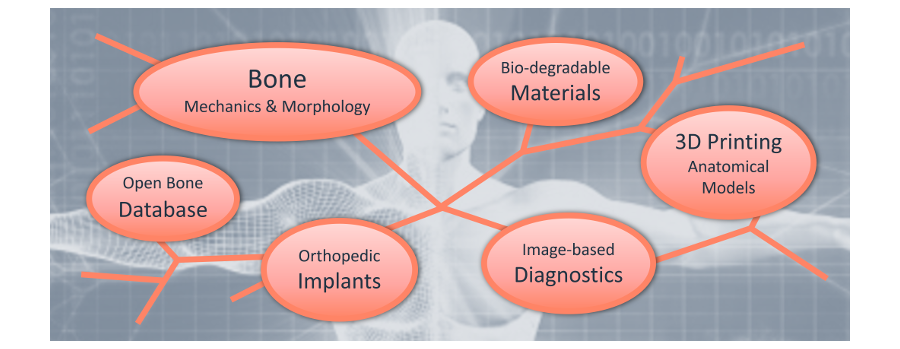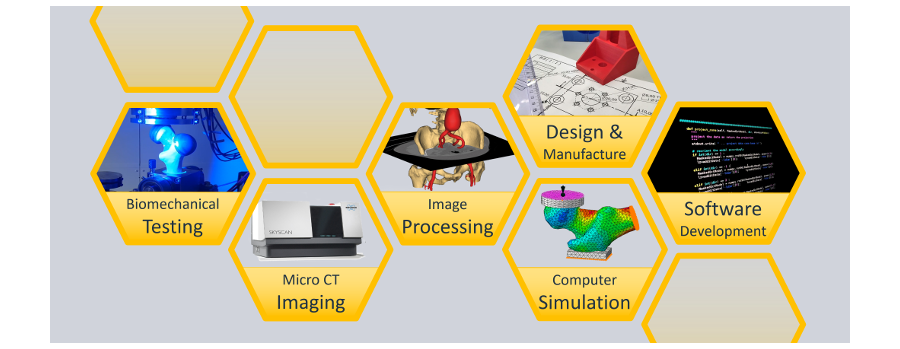Mission
Computational biomechanics puts science & biomedical engineering at the service of human health. Computer-based research in the fields prevention, treatment and aftercare of musculoskeletal disorders is our primary focus.We consider ourselves as a connecting element between research institutions, clinics and companies. Our research should lead to medical innovations and help people.
Research Fields
The division biomechanics focuses on basic- as well as clinically-guided application-oriented research on the human musculoskeletal system. Current research topics are:
- Image-based diagnostic and treatment methods of bone diseases and injuries
- Computational bone biomechanics from the micro to the macro level
- Fast and scalable non-linear micro FE solver for 3D medical images
- “OpenBone”: web-based bone database and analysis methods


